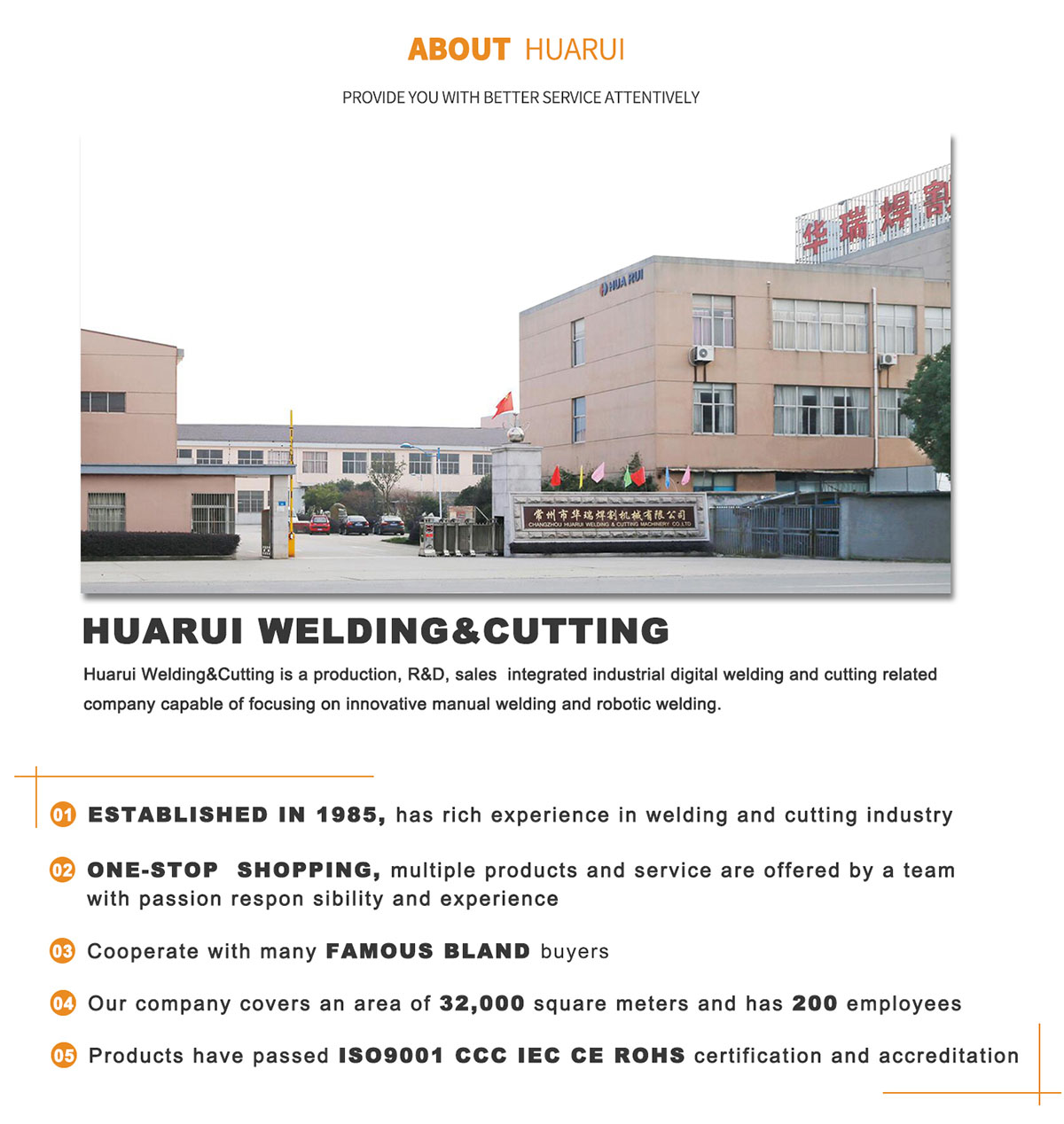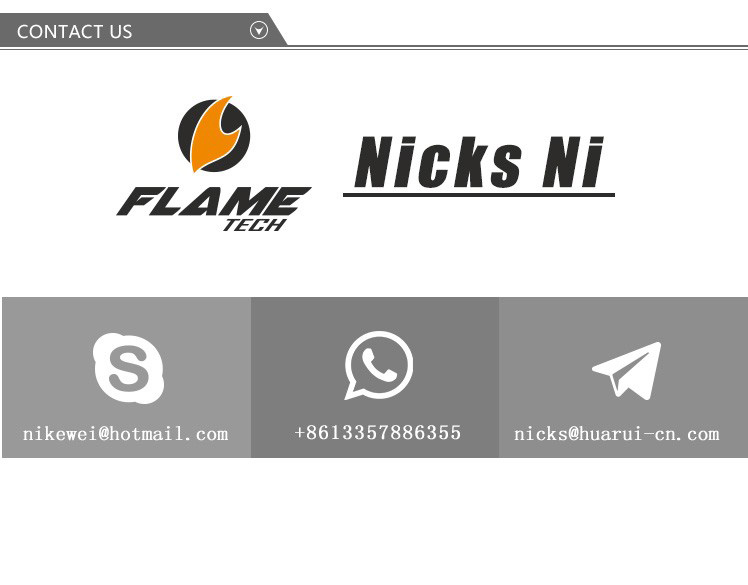- Welcome To Changzhou Huarui Welding & Cutting Machinery Co., Ltd.!
- About Huarui | Inquiry Form | Contact Us |
 中文
中文
 中文
中文1. Hydrogen embrittlement
Hydrogen embrittlement usually manifests as delayed fracture under stress. There have been galvanized parts such as automobile springs, washers, screws, and blade springs, which have broken in succession within a few hours after assembly, and the proportion of breakage has reached 40% to 50%. A special product cadmium plating parts in the use of the process has appeared batch crack fracture, has organized a national research, the development of strict hydrogen removal process. In addition, there are some hydrogen embrittlement does not show delayed fracture phenomenon, for example: electroplating hangers (steel wire, copper wire) due to multiple electroplating and pickling plating, hydrogen infiltration is more serious, and the phenomenon of embrittlement often occurs when a break occurs in use; A mandrel used for precision forging of a hunting gun, after several times of chromium plating, fell and broke; Some hardened parts (large internal stress) will crack when pickling. These parts are so heavily hydrogen-permeated that cracks occur without external stress, and it is no longer possible to use hydrogen removal to restore the original toughness.
2. Hydrogen embrittlement mechanism
The phenomenon of delayed fracture is caused by the diffusion and accumulation of hydrogen in the parts to the parts where the stress is concentrated, and there are many metal defects in the parts where the stress is concentrated (dislocation of atomic lattice, holes, etc.). Hydrogen diffuses to these defects, hydrogen atoms become hydrogen molecules, creating a huge pressure, this pressure and the residual stress inside the material and the external stress on the material, forming a resultant force, when this resultant force exceeds the yield strength of the material, resulting in fracture. Since hydrogen embrittlement is related to the diffusion of hydrogen atoms, diffusion takes time, and the speed of diffusion is related to the concentration gradient, temperature and material type. Therefore, hydrogen embrittlement usually appears as delayed fracture.
Hydrogen atom has the smallest atomic radius, and it is easy to diffuse in steel, copper and other metals, while it is difficult to diffuse hydrogen in cadmium, tin, zinc and their alloys. The cadmium plating layer is the most difficult to diffuse, and the hydrogen produced during cadmium plating, which initially stays in the coating and the metal surface beneath the coating, is difficult to diffuse outward, and dehydrogenation is particularly difficult. After a period of time, hydrogen diffuses into the metal, especially the hydrogen that enters the metal's internal defects, it is difficult to diffuse out. The diffusion rate of hydrogen at room temperature is quite slow, so it needs to be heated immediately to remove hydrogen. The temperature increases, increasing the solubility of hydrogen in steel, too high temperature will reduce the hardness of the material, so the stress before plating and the temperature of dehydrogenation after plating must be considered not to reduce the hardness of the material, not to be in the brittle tempering temperature of some steel, not to destroy the performance of the coating itself.
Measures for avoidance and elimination
1. Reduce the amount of hydrogen infiltration in the metal
When removing rust and oxidation, try to use sand blowing to remove rust, if using pickling, it is necessary to add rhodin corrosion inhibitor in the pickling solution; In the oil removal, the use of chemical oil removal, cleaning agent or solvent oil removal, less hydrogen infiltration, if the use of electrochemical oil removal, first cathode after anode; In electroplating, alkaline bath or bath with high current efficiency has less hydrogen infiltration.
2. Low hydrogen diffusivity and low hydrogen solubility of the plating coating
It is generally believed that when electroplating Cr, Zn, Cd, Ni, Sn, Pb, hydrogen infiltrated into steel parts is easy to remain, and Cu, Mo, Al, Ag, Au, W and other metal coatings have low hydrogen diffusion and low hydrogen solubility, and hydrogen infiltration is less. In the case of meeting the requirements of the technical conditions of the product, the coating that will not cause hydrogen infiltration can be used, such as dacromet coating layer can replace galvanized, will not occur hydrogen embrittenness, corrosion resistance is improved by 7 to 10 times, good adhesion, film thickness of 6 to 8um, equivalent to a thinner galvanized layer, does not affect the assembly.
3. Stress before plating and remove hydrogen after plating to eliminate hydrogen embrittlement
If the internal residual stress of the parts is large after quenching, welding and other processes, tempering treatment should be carried out before plating to reduce the hidden danger of serious hydrogen infiltration.
Parts with more hydrogen infiltration during electroplating should in principle be dehydrogenated as soon as possible, because the hydrogen in the coating and the hydrogen in the surface substrate metal are diffused into the steel substrate, and the amount increases with the extension of time. The new draft international standard states that "it is best to carry out dehydrogenation treatment within 1h after plating, but no later than 3h". There are also corresponding standards in China, which stipulate the dehydrogenation treatment before and after electrogalvanizing. The process of hydrogen removal after electroplating is widely used in heating and baking, and the commonly used baking temperature is 150 ~ 300℃, and the heat preservation is 2 ~ 24h. The specific treatment temperature and time should be determined according to the size of the part, strength, coating properties and the length of plating time. Dehydrogenation is usually carried out in an oven. The dehydrogenation treatment temperature of galvanized parts is 110 ~ 220℃, and the temperature control level should be based on the base material. For elastic materials, thin-walled parts below 0.5mm and steel parts with high mechanical strength requirements, hydrogen treatment must be carried out after galvanizing. In order to prevent "cadmium brittleness", the dehydrogenation treatment temperature of cadmium-plated parts can not be too high, usually 180 ~ 200℃.
Three, should pay attention to the problem
The greater the strength of the material, the greater its hydrogen embrittlement sensitivity, which is the basic concept that surface treatment technicians must be clear when preparing electroplating process specifications. International standards require steel with tensile strength σb>105kg/mm2 to be stressed before plating and dehydrogenated after plating. The French aviation industry requires corresponding dehydrogenation of steel parts with yield strength σs>90kg/mm2.
Because the strength of steel has a good correspondence with the hardness, it is more intuitive and convenient to judge the hydrogen embrittlement sensitivity of the material by the hardness of the material than by the strength. Because a perfect product drawing and machining process should be marked with steel hardness. In electroplating, we found that the hardness of steel began to show the risk of hydrogen embrittlement fracture when it was about HRC38. For parts higher than HRC43, dehydrogenation treatment should be considered after plating. When the hardness is about HRC60, it must be dehydrogenated immediately after the surface treatment, otherwise the steel will crack within a few hours.
In addition to steel hardness, the following points should also be considered:
(1) The use of safety factor of parts: parts with large safety importance should be strengthened to dehydrogen;
(2) The geometry of the parts: with a gap that is easy to produce stress concentration, parts such as small R should be strengthened to dehydrogen;
(3) Cross-sectional area of parts: small spring steel wire and thin blade spring are easily saturated with hydrogen, and dehydrogen should be strengthened;
(4) The degree of hydrogen infiltration of parts: in the surface treatment of more hydrogen, long processing time parts, should be strengthened to dehydrogen;
⑤ Type of coating: such as cadmium plating layer will seriously block hydrogen diffusion, so it is necessary to strengthen dehydrogenation;
The mechanical properties of parts in use: when the parts are subjected to high tensile stress, dehydrogen should be strengthened, and hydrogen embrittlement will not be produced only when the stress is compressed;
⑦ Surface processing state of parts: for parts with large internal residual stress such as cold bending, drawing, cold bending, quenching, welding, etc., it is not only necessary to strengthen dehydrogen after plating, but also to remove stress before plating;
⑧ Historical situation of parts: Special attention should be paid to parts that have been hydrogen embrittlement in the past production, and relevant records should be made.
Dehydrogen embrittlement
The main reason is the metal "hydrogenation" phenomenon caused by the electroplating process, and the unqualified products you use are not the plating process itself has a problem, because electroplating (except vacuum plating) will cause metal hydrogenation, but at present, many metal surface treatment providers have removed the last process (especially for elastic components are deadly) : That is the "dehydrogen treatment" process, that is to say, under normal circumstances, for metal parts with strength requirements need to be dehydrogenated before they can be handed to the user, but in order to save production costs, and the user does not understand the case or has never required, accepted the case, omitting this process can save 5~15% of the cost. So you feel that the bolts, spring washers and other parts after electroplating are "brittle" after electroplating treatment.
Generally speaking, the dehydrogenation treatment requirements for metal parts with strength requirements are: 120 degrees ~220 degrees high temperature maintained for 1 to 2 hours (after electroplating), and the specific

HUARUI alibaba shop:
https://topwelding.en.alibaba.com
https://czhuarui.en.alibaba.com


 master@huarui-cn.com
master@huarui-cn.com 86-519-86371071
86-519-86371071 86-519-86371072
86-519-86371072
View More(Total0)Comment Lists